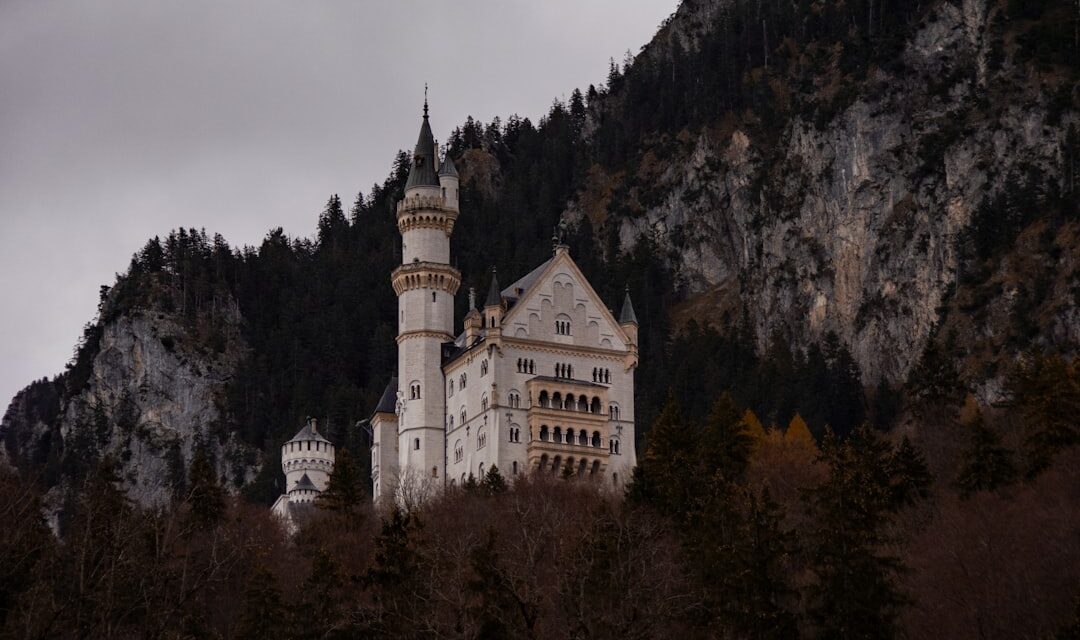Albrecht Altdorfer, born around 1480 in Regensburg, Germany, emerged as one of the most significant figures of the Northern Renaissance. His early life remains somewhat shrouded in mystery, with scant records detailing his formative years. However, it is widely believed that he was born into a family of artists, which likely influenced his artistic inclinations from a young age.
His father, a painter and a member of the local guild, provided Altdorfer with an environment rich in artistic tradition. This familial backdrop would have been instrumental in shaping his skills and aspirations, allowing him to absorb the nuances of craftsmanship and creativity that would later define his oeuvre. Altdorfer’s formal training is thought to have begun in the workshop of a local master, where he would have honed his skills in drawing and painting.
By the time he reached adulthood, he had already established himself as a talented artist, gaining recognition for his work in both painting and printmaking. His exposure to the works of contemporaries such as Dürer and the influence of Italian Renaissance artists would further refine his style. The combination of these experiences laid a solid foundation for his future innovations, allowing him to develop a unique artistic voice that would resonate throughout the art world.
Summary
- Albrecht Altdorfer was born in the early 1480s in Regensburg, Germany, and trained as a painter and engraver.
- His style was influenced by the Italian Renaissance, particularly the works of Leonardo da Vinci and Albrecht Dürer.
- Altdorfer’s major works often depicted religious and mythological themes, with a focus on intricate details and vibrant colours.
- He had a significant impact on the Renaissance through his innovative use of landscape and his exploration of nature in his paintings.
- Altdorfer’s legacy and influence on later artists can be seen in the development of the Danube School and the continued exploration of landscape in art history.
Style and Influences
Altdorfer’s style is characterised by its intricate detail and vibrant colour palette, which set him apart from many of his contemporaries. He was particularly adept at capturing the interplay of light and shadow, creating a sense of depth and atmosphere that brought his landscapes to life. His works often feature elaborate compositions filled with dynamic figures and rich textures, reflecting a keen observation of nature and human emotion.
This attention to detail is evident in both his religious and secular works, where he seamlessly blends narrative elements with a profound appreciation for the natural world. Influenced by the burgeoning Humanist movement, Altdorfer’s art reflects a deep engagement with classical themes and motifs. He drew inspiration from ancient mythology and biblical narratives, infusing them with a distinctly Northern sensibility.
The interplay between the sacred and the secular is a hallmark of his work, as he sought to explore the complexities of human experience through his art. Additionally, the influence of Italian Renaissance artists such as Raphael and Leonardo da Vinci can be seen in Altdorfer’s use of perspective and composition, which he adapted to suit his own artistic vision.
Major Works and Themes
Among Altdorfer’s most celebrated works is “The Battle of Alexander at Issus,” a monumental painting that exemplifies his mastery of composition and narrative complexity. This work not only showcases his skill in depicting large-scale battles but also highlights his ability to convey emotion through the expressions and postures of his figures. The painting is rich in detail, with each soldier meticulously rendered, contributing to the overall sense of chaos and movement.
The dramatic landscape serves as both a backdrop and an integral part of the narrative, illustrating Altdorfer’s innovative approach to integrating environment with action. Another significant theme in Altdorfer’s oeuvre is the exploration of nature and its relationship to humanity. His landscapes are not mere backdrops; they are vibrant entities that reflect the emotional states of the figures within them.
Works such as “The Large Landscape” demonstrate his fascination with the natural world, showcasing sweeping vistas filled with intricate foliage and atmospheric effects. Altdorfer’s ability to evoke a sense of place is unparalleled, as he captures the essence of the German landscape with an almost poetic sensibility. This connection between humanity and nature is a recurring motif in his work, inviting viewers to contemplate their own relationship with the world around them.
Altdorfer’s Impact on the Renaissance
Albrecht Altdorfer played a pivotal role in shaping the course of Northern Renaissance art. His innovative approach to landscape painting set new standards for artists in Germany and beyond, influencing generations to come. By elevating landscape to a subject worthy of serious artistic exploration, he paved the way for future artists to delve into this genre with greater depth and complexity.
His emphasis on nature as a central theme resonated with the growing interest in humanism during this period, reflecting a shift towards a more individualistic perspective in art. Moreover, Altdorfer’s integration of narrative elements within landscapes marked a significant departure from traditional approaches. He demonstrated that landscapes could convey profound emotional and spiritual messages, challenging artists to think beyond mere representation.
This innovative spirit contributed to the evolution of art during the Renaissance, encouraging artists to explore new themes and techniques that would ultimately enrich the artistic landscape of Europe.
Techniques and Innovations
Altdorfer was not only an accomplished painter but also an innovative printmaker who contributed significantly to the development of printmaking techniques during his time. He experimented with woodcut and etching processes, producing intricate prints that showcased his mastery of line and form. His prints often featured elaborate details that mirrored the complexity found in his paintings, allowing him to reach a wider audience while simultaneously elevating printmaking as an art form.
One of Altdorfer’s notable innovations was his use of colour in both painting and printmaking. He employed a vibrant palette that brought his subjects to life, creating an emotional resonance that captivated viewers. His ability to manipulate colour to evoke mood and atmosphere was groundbreaking for his time, influencing subsequent generations of artists who sought to explore similar techniques.
Additionally, Altdorfer’s meticulous attention to detail extended beyond mere aesthetics; it reflected a deep understanding of form and structure that would inform future developments in art.
Patronage and Collaborations
Throughout his career, Altdorfer enjoyed patronage from various influential figures, which allowed him to pursue ambitious projects and expand his artistic horizons. His relationship with Duke Wilhelm IV of Bavaria was particularly significant; the duke recognised Altdorfer’s talent early on and commissioned several works that showcased the artist’s unique style. This patronage not only provided financial support but also elevated Altdorfer’s status within the artistic community, enabling him to collaborate with other prominent artists and craftsmen.
Collaborations were an essential aspect of Altdorfer’s career, as he often worked alongside fellow artists on large-scale projects. These partnerships allowed him to exchange ideas and techniques, fostering an environment of creativity that enriched his work. The collaborative spirit of the time encouraged artists to push boundaries and explore new possibilities, resulting in a vibrant artistic culture that thrived during the Renaissance.
Altdorfer’s Legacy and Influence on Later Artists
Albrecht Altdorfer’s legacy is profound, leaving an indelible mark on the trajectory of European art. His innovative approach to landscape painting inspired countless artists who followed in his footsteps, including those within the Danube School and beyond. The emphasis he placed on nature as a subject worthy of exploration resonated deeply with later movements such as Romanticism, where artists sought to capture the sublime beauty of the natural world.
Moreover, Altdorfer’s ability to blend narrative elements with landscape set a precedent for future generations. Artists such as Caspar David Friedrich drew upon his techniques, infusing their own works with emotional depth and spiritual significance. The impact of Altdorfer’s work can be seen across various artistic movements, as his exploration of themes related to humanity’s relationship with nature continues to inspire contemporary artists today.
The Danube School and Altdorfer’s Role
Albrecht Altdorfer is often regarded as one of the leading figures of the Danube School, a group of artists known for their distinctive approach to landscape painting during the 16th century. This school emerged in response to the growing interest in nature and its representation within art, reflecting broader cultural shifts occurring during the Renaissance.
As a central figure within the Danube School, Altdorfer helped establish key principles that would guide subsequent artists in their exploration of landscape themes. His ability to capture atmospheric effects and intricate details set new standards for landscape painting, encouraging others to adopt similar techniques while infusing their own interpretations. The legacy of the Danube School can be traced back to Altdorfer’s pioneering work, which laid the groundwork for future developments in this genre.
Altdorfer’s Exploration of Landscape and Nature
Albrecht Altdorfer’s exploration of landscape is perhaps one of his most enduring contributions to art history. His landscapes are characterised by their dramatic compositions and meticulous attention to detail, often featuring sweeping vistas that evoke a sense of grandeur and majesty. Unlike many artists of his time who treated landscapes as mere backdrops for religious or historical narratives, Altdorfer imbued them with emotional depth and significance.
His fascination with nature extended beyond mere representation; it was an exploration of humanity’s place within the natural world. In works such as “The Large Landscape,” Altdorfer invites viewers to contemplate their relationship with nature while simultaneously celebrating its beauty. This connection between humanity and landscape is a recurring theme throughout his oeuvre, reflecting a profound understanding of the interconnectedness between people and their environment.
Altdorfer’s Religious and Mythological Works
In addition to his landscapes, Albrecht Altdorfer produced numerous religious and mythological works that showcase his versatility as an artist. His religious paintings often depict biblical narratives with a unique interpretation that reflects both spiritual depth and human emotion. For instance, “The Crucifixion” demonstrates his ability to convey profound sorrow through expressive figures set against dramatic backgrounds.
Altdorfer also drew inspiration from classical mythology, infusing these themes with a distinctly Northern sensibility. His mythological works often feature intricate details that invite viewers to engage with the narratives on multiple levels. By blending religious themes with mythological elements, Altdorfer created a rich tapestry of imagery that speaks to universal human experiences while remaining rooted in specific cultural contexts.
Altdorfer’s Place in Art History
Albrecht Altdorfer occupies a significant position within art history as one of the foremost figures of the Northern Renaissance. His innovative approach to landscape painting set new standards for artistic expression during this period, influencing generations of artists who sought to explore similar themes. His ability to blend narrative elements with natural settings marked a departure from traditional approaches, paving the way for future developments in art.
Moreover, Altdorfer’s contributions extend beyond mere technique; they reflect broader cultural shifts occurring during the Renaissance as artists began to engage more deeply with themes related to humanity’s relationship with nature and spirituality. His legacy continues to resonate today, inspiring contemporary artists who seek to explore similar themes while pushing boundaries within their own practices. As we reflect on Altdorfer’s impact on art history, it becomes clear that his work remains relevant not only for its technical brilliance but also for its profound exploration of human experience within the natural world.
For those interested in exploring different art mediums, a related article worth checking out is “Ten Quick Acrylic Painting Exercises to Improve Your Skills” from Think of Art. This article provides valuable tips and exercises to help artists enhance their acrylic painting techniques. By following these exercises, artists can develop their skills and create stunning works of art. To read more about this topic, visit here.


